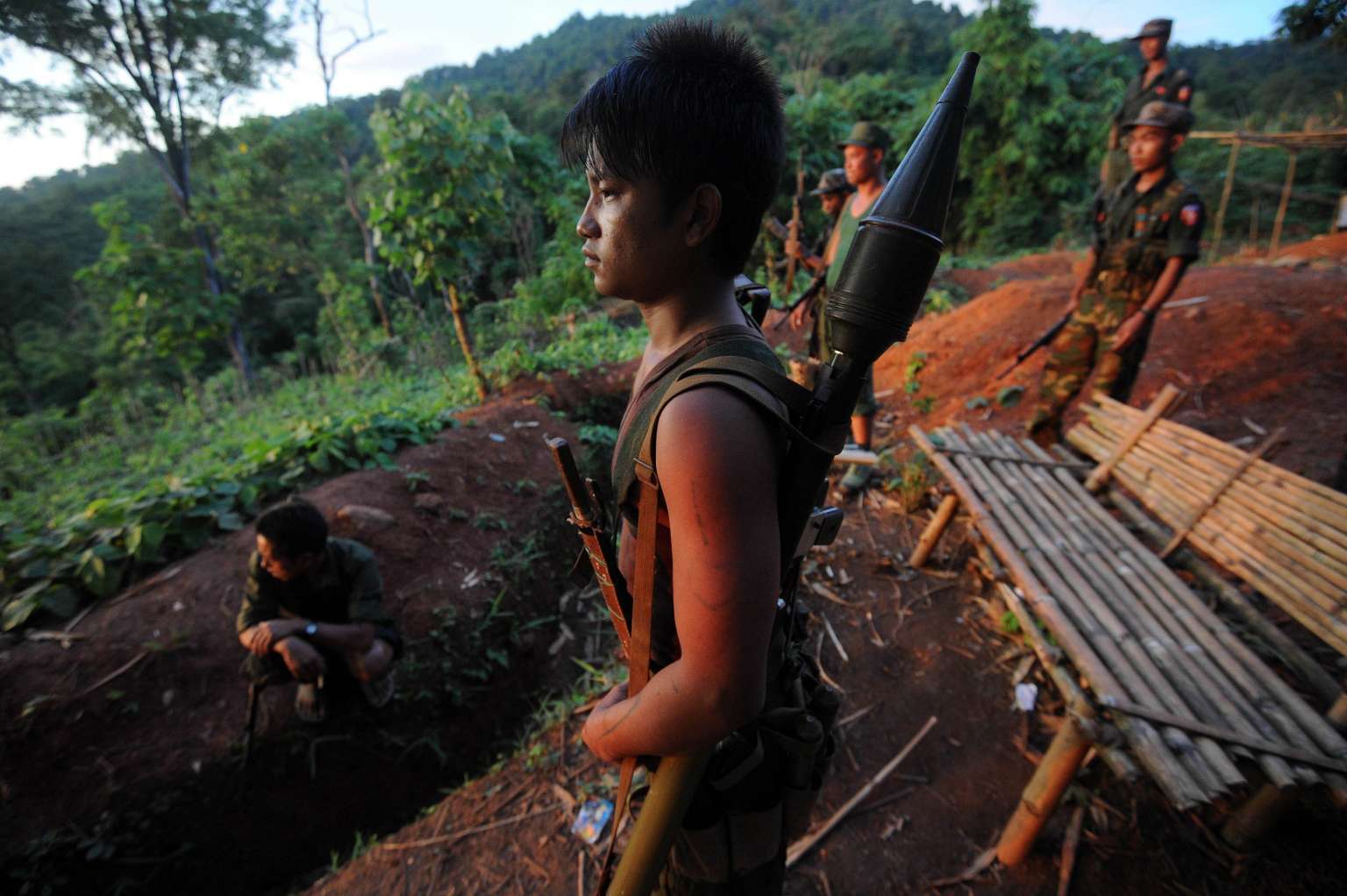Myanmar signs ceasefire accord with eight of 16 ethnic armed groups
Sign up now: Get insights on Asia's fast-moving developments

This file picture shows soldiers from the All Burma Students Democratic Front at an outpost on the Laja Yang frontline. The armed group is among eight which signed a ceasefire accord with the Myanmar government on Oct 15, 2015.
-- PHOTO: AFP
Follow topic:
The Myanmar government on Thursday (Oct 15) signed a ceasefire agreement with eight ethnic armed groups, a potentially significant accord that aims to end decades of intermittent civil wars in the country making a fragile transition to democracy from years of stifling military dictatorship.
The signing of the Nationwide Ceasefire Accord (NCA) took place in the capital Naypyitaw between government signatories including army chief Senior General Min Aung Hlaing, and representatives from the armed groups.
It was witnessed by local and international observers from countries such as China, Japan, India and Thailand. India sent its National Security Advisor Ajit Doval and Joint Intelligence Chief R.N. Ravi.
This week, the Myanmar government's chief negotiator, Cabinet minister Aung Min, wrote in a commentary: "The NCA is the first small step towards bringing our fractured society of many different ethnicities and religions into a dialogue to shape the future of our country on equal terms.''
Only half of the 16 armed groups which had agreed to the draft text in March actually signed the final agreement - touted as the reformist President Thein Sein's legacy. But this agreement is better than none, its supporters have said, and the president has said it will remain open for other groups to sign when they are ready.
The eight groups who signed the ceasefire were the All Burma Students' Democratic Front, Arakan Liberation Party, Chin National Front, Democratic Karen Benevolent Army, Karen National Liberation Army-Peace Council, Karen National Union, Pa-O National Liberation Organisation, and the Shan Sate Army - South.
The nine that have stayed out included United Wa State Army - believed to be the largest and best equipped of the country's armed ethnic groups, and Kachin Independence Organisation (KIO), whose armed wing, the Kachin Independence Army, has clashed regularly with the Myanmar military since 2011.
The eight groups which signed the ceasefire have been removed from the government's list of "unlawful associations'', thus becoming legal groups.
But the outlook remains fragile. Much depends on the implementation of the agreement, analysts say, as there remain disagreements within some of the armed groups. On the eve of the signing, a small Karen armed faction released a statement saying the agreement was "useless".
In an email to The Straits Times, David Steinberg, a professor at Georgetown University in Washington, DC, wrote that the NCA was "of course, simply the first step and what follows will be the very hard part.''
"The cardinal problem facing the state since independence has been majority-minority relations. This signing takes the process further than ever before, but the road ahead is tortuous.''
Yangon-based independent researcher Kim Jolliffe, who has worked for the Asia Foundation and IHS Jane's, told The Straits Times that "the NCA commits all sides to notify their ranks within one week of all of the articles in the NCA. Then comes the agreement of a code of conduct with a joint monitoring committee within 40 days.''
"The government and Tatmadaw (Myanmar's army) really have to come through and stick to the agreement. If not, all will be lost.''

